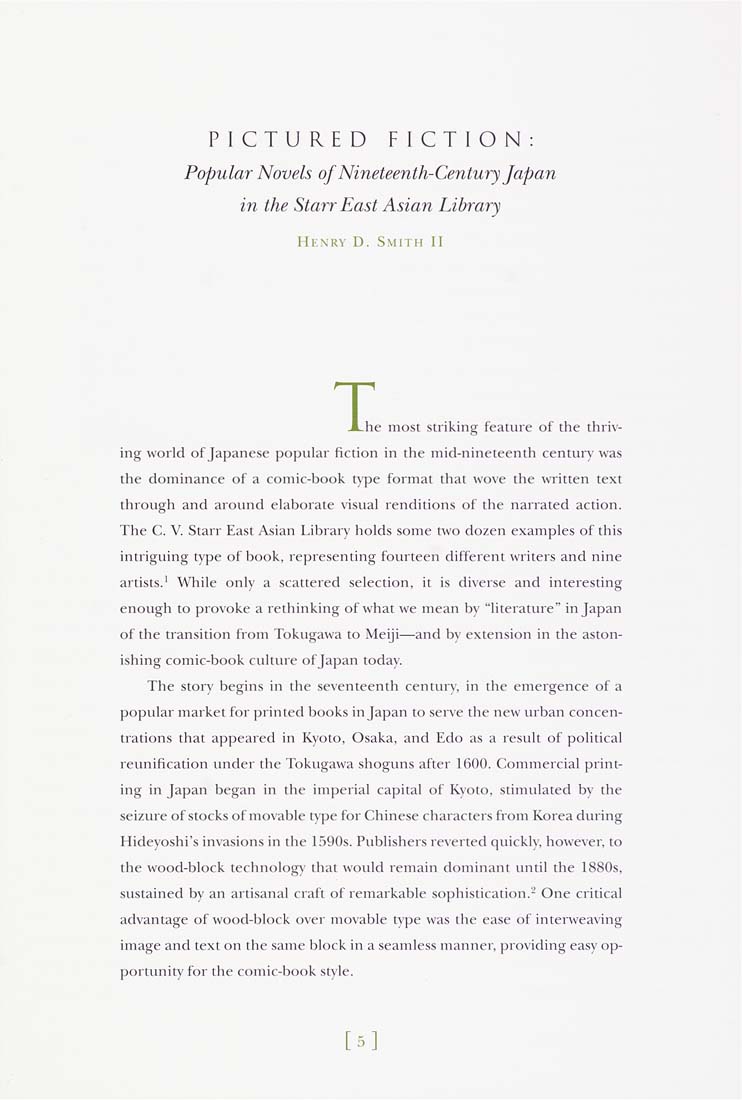Columbia Library columns (v.45(1996))
(New York : Friends of the Columbia Libraries. )
|
||
|
|
|
|
| v.45,no.1(1996:Spring): Page 5 |

PICTURED FICTION: Popular Novels of Nineteenth-Century Japan in the Starr East Asian Library Ht;NRY D. Smith II T JLhe Lhe most striking feature of the thriv¬ ing world of Japanese popidar fiction in the mid-nineteenth century was the dominance of a comic-book type format tliat wove the written text through and around elaborate visual renditions of the narrated action. The C. V. Starr East Asian Library holds some two dozen examples of this intriguing type of book, rejjresenting fourteen difierenl writers and nine artists.' While only a scattered selection, it is diverse and interesdng enough to provoke a rethinking of what we mean bv "literature" in Japan of the transition from Tokugawa to Meiji—and by extension in the aston¬ ishing comic-book cultiue of Japan today. The story begins in the seventeenth centiu"y, in the emergence of a popular market for printed books in Japan to serve the new urban concen¬ trations that appeared in Kyoto, Osaka, and Edo as a result of political reunification under the Tokugawa shoguns after 1600. Commercial print¬ ing in Japan began in the imperial capital of Kyoto, stimulated by the seizure of stocks of movable type for Chinese characters from Korea during Hideyoshi's invasions in the 1590s. Publishers reverted quickly, however, to the wood-block technology that would remain dominant until the 1880s, sustained by an artisanal crafi of remarkable sophistication.- One critical advantage of wijod-block over movable (vpe was the ease of interweaving image and text on die same block in a seandess uianuer, pro\'iding easy op- porttmity for the conuc-book style. [5] |
| v.45,no.1(1996:Spring): Page 5 |







